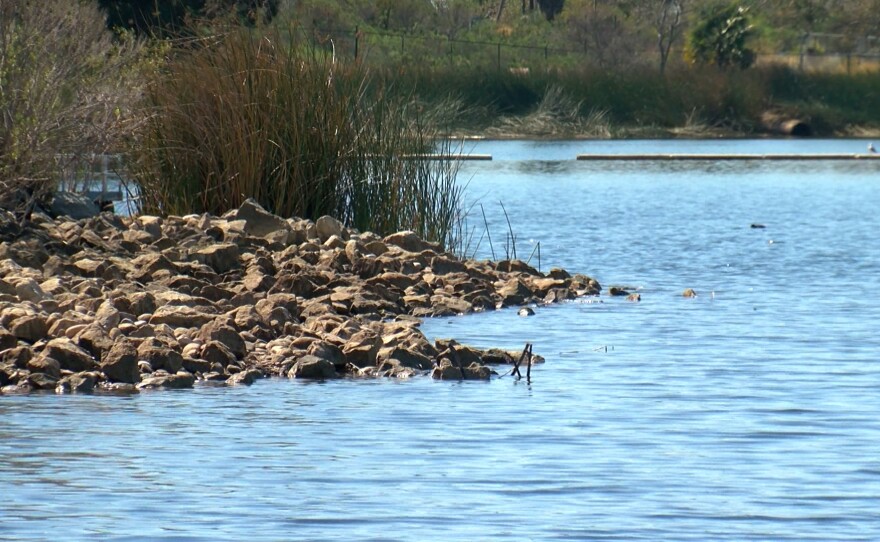Just three months ago, almost all of California was in drought, including at extreme and exceptional levels — the highest levels possible. Warnings went out from state water officials to expect only a fraction of requested water allocations.
Then came the storms, one after the other. Nine atmospheric rivers pummeled California between late December and mid-January, and we’ve had plenty of precipitation since then.
Data from the U.S. Drought Monitor shows nearly 17% of the state is now free of drought or a condition known as abnormally dry. Forty-nine percent of the Golden State is now in moderate or severe drought and the rest of the state is “abnormally dry.”
So, how has all that rain and snow affected the more than 20 reservoirs in San Diego County? We asked San Diego County Water Authority Water Resources Specialist Efren Lopez, who reminded us of the main purpose of reservoirs.

“The majority of the reservoirs in San Diego County are used as storage for our imported water, but some of them are capturing that rainfall and the reservoir levels are increasing," Lopez said.
A spokesperson for the city of San Diego said this season’s storms have contributed about 36,000 acrefeet of water to the city’s nine reservoirs, equaling approximately 10 billion gallons.
Sounds like a lot, but that’s only enough to supply city residents with water for less than three months. And it’s important to remember where we were when the wet season started.

“We’re starting the water season after three years of consecutive dryness. And we saw last year, we saw great precipitation in October and December and then we had the three driest consecutive months that we’ve had in a very long time," said Lopez.
Lopez went on to say that whatever precipitation falls on or runs into the county’s reservoirs is really just an added bonus. And it’s worth remembering that California is still years away from completely recovering from years of dry weather. Experts say it will take years to replenish groundwater supplies here, and across the state.








